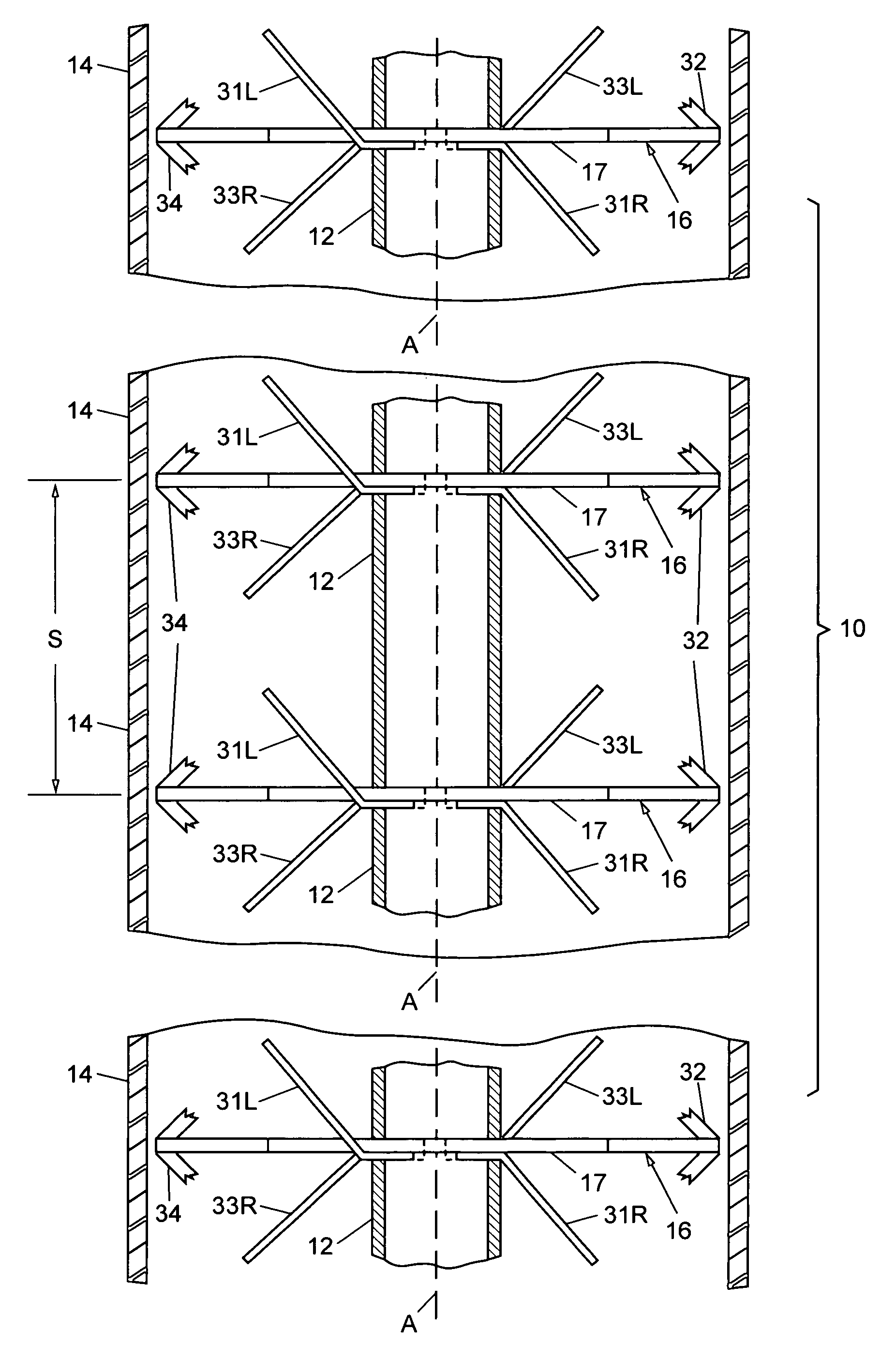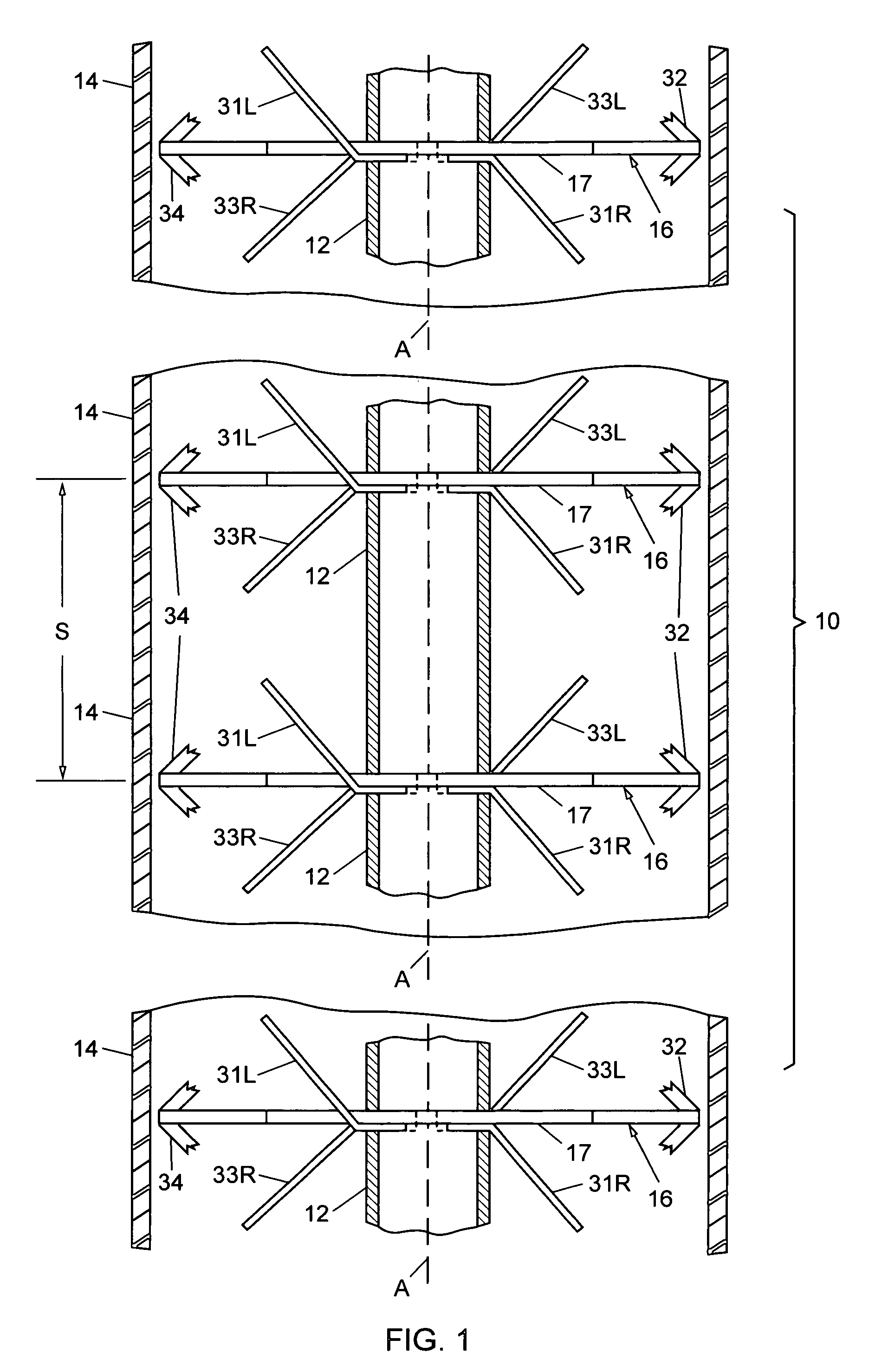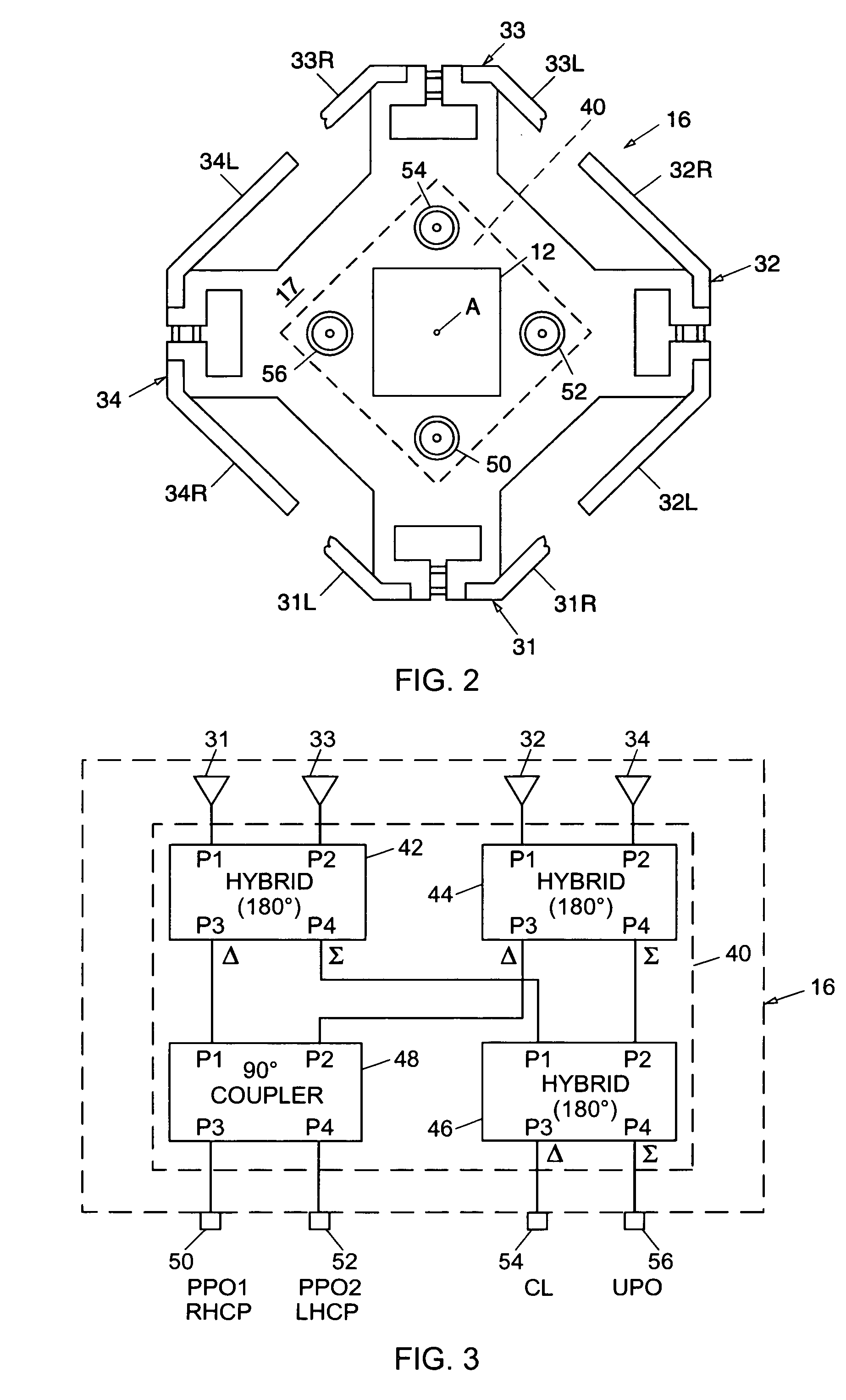GPS antenna array and system for adaptively suppressing multiple interfering signals in azimuth and elevation
a technology of antenna array and antenna array, applied in the field of antennas, can solve problems such as serious errors in position measurement, accuracy degradation, and errors in the position determined by the receiver
- Summary
- Abstract
- Description
- Claims
- Application Information
AI Technical Summary
Benefits of technology
Problems solved by technology
Method used
Image
Examples
Embodiment Construction
[0046]FIG. 1 is a partial view of an antenna 10 according to the invention. In the disclosed embodiment, antenna 10 is constructed and arranged for use as a reference antenna array in a differential global positioning system (DGPS). The antenna 10 includes a mast 12 having an axis A, and the mast is arranged to be fixed at one or more positions (not shown in FIG. 1) with respect to a surrounding ground area so that it can extend vertically above the area. The ground area may be located, for example, in the vicinity of a ground airport runway or a landing zone on an aircraft carrier.
[0047]The antenna 10 has an exterior protective shell or radome 14 which can be, e.g., circularly cylindrical in form with an axis that coincides with the axis A of the mast 12. Preferably, the material (typically a fiberglass reinforced plastics) and wall thickness of the radome 14 should have negligible, if any, effect on the amplitude and phase of GPS signals passing through the radome at all angles of...
PUM
 Login to View More
Login to View More Abstract
Description
Claims
Application Information
 Login to View More
Login to View More - R&D
- Intellectual Property
- Life Sciences
- Materials
- Tech Scout
- Unparalleled Data Quality
- Higher Quality Content
- 60% Fewer Hallucinations
Browse by: Latest US Patents, China's latest patents, Technical Efficacy Thesaurus, Application Domain, Technology Topic, Popular Technical Reports.
© 2025 PatSnap. All rights reserved.Legal|Privacy policy|Modern Slavery Act Transparency Statement|Sitemap|About US| Contact US: help@patsnap.com



